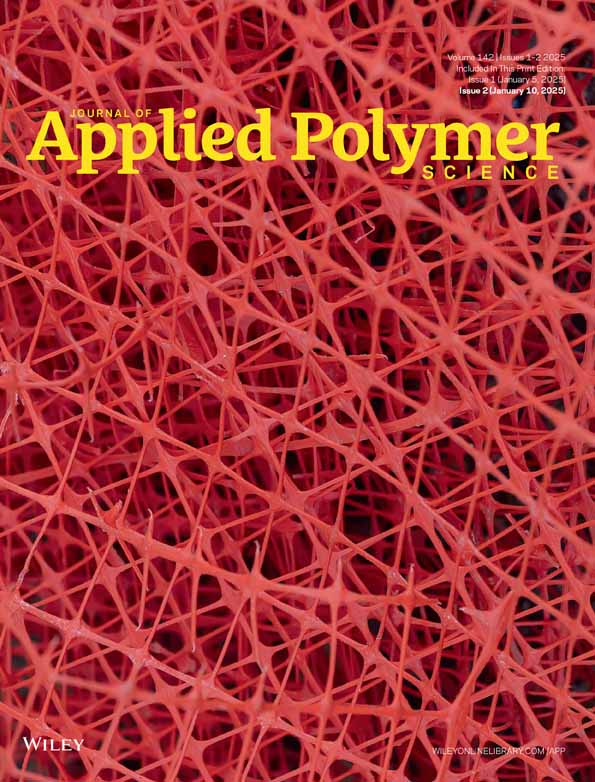Effect of succinonitrile on the structural, ion conductivity, and dielectric properties of PVDF-HFP based solid polymer electrolytes
Abstract
A detailed account of the poly(vinylidene difluoride-co-hexafluoropropylene) (PVDF-HFP)/succinonitrile (SN)/lithium bis(trifluoromethanesulfonyl)imide (LiTFSI) based solid polymer electrolytes (SPEs) of various compositions is reported. SN is incorporated as plasticizer, while LiTFSI is employed as the source of lithium ions. Fourier transfer infrared (FTIR) spectroscopy reveals the formation of polar and electroactive γ crystal phase by PVDF in pristine PVDF-HFP and the prepared SPE films. FTIR further confirms the interaction between the host polymer and the salt and between the salt and the plasticizer. The interaction between the salt and plasticizer suggests that SN not only offers the plasticization effect but also facilitates salt dissociation. The ion conductivity increases with increasing salt content up to 20 wt% but beyond that concentration a decline in ion conductivity is observed, which could be attributed to the ion pair association or cluster formation due to the excess salt concentration that reduces the availability of free ions and ultimately leads to the reduction in ion conductivity. After including SN in the SPE formulation, electrochemical impedance spectroscopy reveals a substantial increase in room temperature ion conductivity of the SPE from ~1.08 × 10−5 S cm−1 for pristine SPE with 20 wt% salt to ~2.7 × 10−4 S cm−1 for plasticized SPE with 40 wt% SN and 20 wt% salt. This is attributed to the plasticizing effect of SN that enhances ion mobility through the matrix and to the increased charge carrier concentration (SN facilities salt dissociation). The fabricated SPEs exhibit a significant enhancement in ion conductivity with increasing temperature and the maximum ion conductivity of 1.1 × 10−3 S cm−1 is attained at 393 K by plasticized SPE with 40 wt% SN content. The ion conductivity of all the prepared SPEs follows the temperature dependent Arrhenius behavior, suggesting the thermally activated ion hopping mechanism of ionic conduction. Further, the plasticized SPEs display near unity ion transference number indicating the predominance of the ionic mode of conduction. The dielectric and electric modulus analysis reveal a faster relaxation phenomenon and hence higher ion conductivity of the prepared SPEs with increasing salt and plasticizer content.
Open Research
DATA AVAILABILITY STATEMENT
The data that support the findings of this study are available from the corresponding author upon reasonable request.




